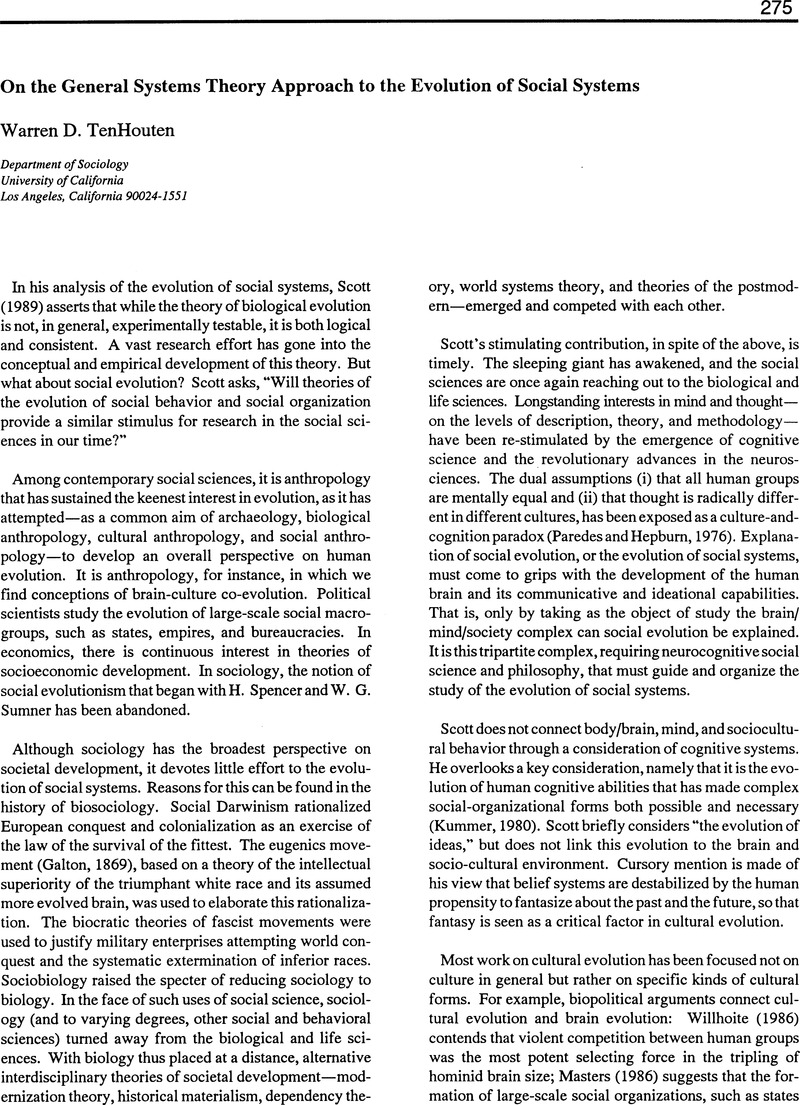No CrossRef data available.
Article contents
On the General Systems Theory Approach to the Evolution of Social Systems
Published online by Cambridge University Press: 17 May 2016
Abstract
An abstract is not available for this content so a preview has been provided. Please use the Get access link above for information on how to access this content.

- Type
- Book Reviews
- Information
- Copyright
- Copyright © Association for Politics and the Life Sciences
References
Bailey, Kenneth D. (1990). Social Entropy Theory. Albany, NY: State University of New York Press.Google Scholar
Barrett, T. W., and Pohl, H.A, eds. (1987). Energy Transfer Dynamics: Studies and Essays in Honor of Herbert Fröehlich on his Eightieth Birthday. New York: Springer-Verlag.Google Scholar
von Bertalanffy, L. (1971). General Systems Theory: Foundations, Development, Applications. London: A. Lane.Google Scholar
Galton, F. (1869). Hereditary Genius: An Inquiry into its Laws and Consequences. New York: Horizon Press.Google Scholar
Kummer, H. (1980). “Analogs of Morality Among Nonhuman Primates.” In Stent, G. (ed.), Morality as a Biological Phenomenon. Berkeley: University of California Press.Google Scholar
Livingstone, F. B. (1980). “Cultural Causes of Genetic Change.” In Barlow, G. W. and Silverberg, J., eds., Sociobiology: Beyond Nature-Nurture. Boulder, CO: Westview Press.Google Scholar
Masters, R.D. (1986). “Why Bureaucracy?” In White, E. and Losco, J., eds., Biology and Bureaucracy: Public Administration and Public Policy from the Perspective of Evolutionary, Genetic and Neurobiological Theory. Boston: University Press of America, Inc.Google Scholar
Paredes, J.A., and Hepburn, M.J. (1976). “The Split Brain and the Culture-and-Cognition Paradox.” Current Anthropology 17:121–127.Google Scholar
Willhoite, F.H. (1986). “Political Evolution and Legitimacy: The Biocultural Origins of Hierarchical Organizations.” In Biology and Bureaucracy: Public Administration and Public Policy from the Perspective of Evolutionary, Genetic and Neurological Theory. Boston: University Press of America, Inc.Google Scholar




